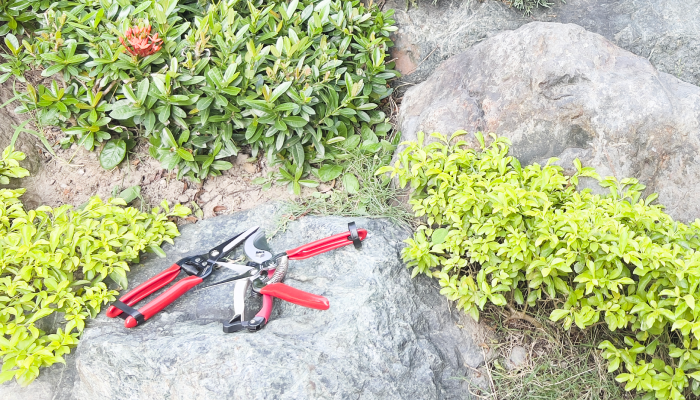
Six Rules of Small Garden Pruning (for Pros & Novice Gardeners)
One of the most important aspects of designing and caring for a beautiful garden is pruning. But because they lack confidence or don't fully understand how to prune, many gardeners avoid doing it. This article will explain how to prune plants effectively in a small-scale garden. Pruning with a garden hand pruning tool is an essential part of maintaining a healthy and beautiful garden. It involves removing dead or diseased branches, shaping plants, and encouraging new growth. However, pruning can be tricky, especially if you have a small garden. You want to create a beautiful and well-manicured space without sacrificing the health of your plants.

Six Garden Pruning Rules for Professionals and Novice Gardeners
Here are six rules of small garden pruning to help you achieve this:
Prune at the right time
Timing is critical when it comes to pruning. You want to prune when the plant is dormant or just starting to grow. For most plants, the best time to prune is in late winter or early spring before new growth begins. This is when you can remove dead, damaged, or diseased branches without harming the plant.
Use the right tools
Having the right tools is essential for effective pruning. Use sharp, clean, and well-maintained tools to prevent tearing or damaging the plant. A pair of pruning shears, loppers, and a pruning saw are the basic tools you'll need for most small garden pruning tasks.
Know how much to prune
Knowing how much to prune is critical to ensure the health and beauty of your plants. As a general rule, you should not remove more than a third of the plant's foliage in a single pruning session. Removing too much foliage can stress the plant and affect its ability to grow and produce flowers or fruit.
Prune with a purpose
Before you start pruning, think about what you want to achieve. Do you want to shape the plant, remove dead or diseased branches, or promote new growth? Understanding your pruning goals will help you to prune with a purpose and achieve the desired results.
Prune with the plant's growth habit in mind
Each plant has its own growth habit, and you should prune it accordingly. For example, shrubs that bloom on new wood should be pruned in late winter or early spring, while those that bloom on old wood should be pruned after they have bloomed. Understanding your plant's growth habits will help you to prune at the right time and in the right way.
Don't forget to clean up
Once you have finished pruning, it's essential to clean up any debris to prevent the spread of disease. Dispose of dead branches, leaves, and other debris in the trash or compost bin. Clean and sterilize your pruning tools to prevent the spread of disease to other plants.

Choosing The Right Garden Hand Pruning Tool
This will not only keep your yard looking neat, but it will also keep your plants healthy. You can begin practising pruning shrubs without the feared fear by removing a little portion. But the best garden hand pruning tool and equipment from Gardeness.